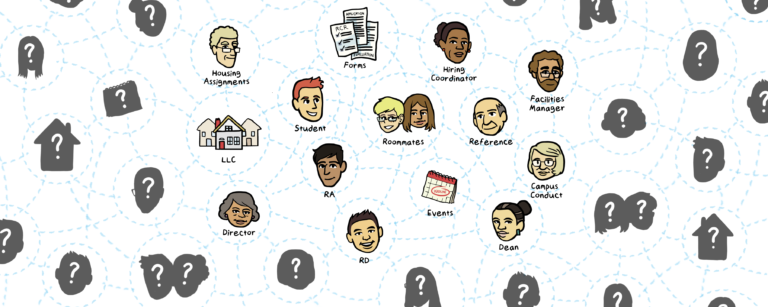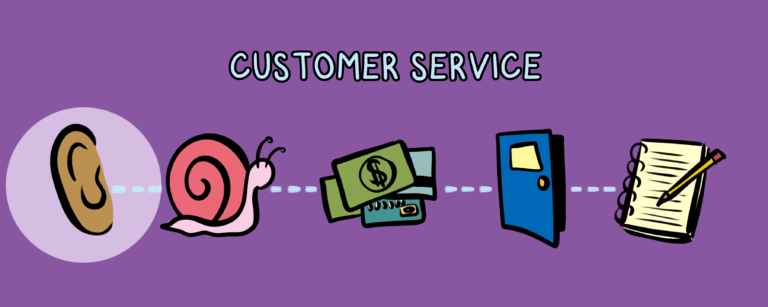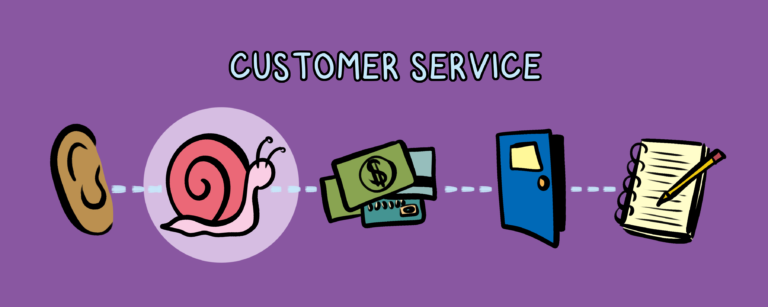 Written with Sarah Gray Sheldon, Assistant Director of Learning & Engagement at Florida State University
Written with Sarah Gray Sheldon, Assistant Director of Learning & Engagement at Florida State University
Oh hey! Welcome to the community.
Our field is consistently responding to the demand for data and the ability to “prove” our efforts are having a positive impact on the student experience. It’s no longer good enough to say we believe intentional interactions make a difference; we need to show the impact through data. Due to the nature of intentional interactions, it can be difficult to collect data, as we rely on student staff members to obtain and document this information. It’s important to precisely identify what information you need to report. If you start at the end and work backwards, you’ll likely end up with a documentation process that is simple, efficient, and quick for staff members to complete.
Accessibility and Efficiency
From our experience, students appreciate two things when it comes to forms: accessibility and efficiency. Students want to be able to quickly complete their forms from any location. Whether via cellphone, tablet, or laptop, the easier you make the form to access, the more success you will have in completion. Regarding efficiency, it is pivotal that you only require the collection of the “need to-know” information. Consider using your intentional interaction forms as a starting point with optional questions to inform when needed. If you are collecting data on student wellness, the interaction may request student staff to explore wellness areas in which students need additional support and report on that, for example. Staff may feel inclined to share details of that conversation, or they may simply prefer to report the raw data. Providing an option to collect details but requiring the “raw data” response will result in more users completing the form while still collecting the qualitative information on a case-by-case basis.
Factors
There are a number of factors to examine when considering what you need to report. To begin, consider your stakeholders as well as the type of report that you need to gather. If you’re creating an infographic to showcase what topics your staff are spending their time on, you’ll likely need more quantitative data. Therefore, ask questions about specific topics or learning outcomes that relate to your student needs or learning outcomes that have a multiple-choice response. If you’re writing a report for your supervisors or Deans, you might need more qualitative data to support the quantitative data that you’ve collected. Perhaps your report guides your intentional interactions for future months. When searching for trends in your data, a supportive mix of qualitative and quantitative data will help you learn more about those conversations and how to support those exchanges through ongoing development. Lastly, some institutions are using intentional interactions to showcase the personalized time that student staff spend with their students to increase budgets for their programs. If this is the case, you may want to consider asking a question about length of time on each conversation so you can easily pull and calculate that data in a way that makes sense for your institution.
Valuing Student Staff Members
Our student staff members are essential to the success of this process. Without their buy-in, your data will not be complete. We need to consult with students in the development of forms to ensure the information collected is easy to document and feels appropriate to students. This consultation needs to be continuous. Once your form is rolled out, you should pull the staff back and analyze the functionality of the report. If staff input and buy in are missing, you will continually receive pushback from student staff members or experience apathy in your data acquisition, potentially resulting in a misrepresented data set.
Finding ways and means to fold the interactions into tasks, the student staff is already performing can help tremendously with buy-in from student staff members. When the interaction is naturally looped into the rhythm of the semester or folded into a tool staff is comfortable using, then the interaction will be easier to achieve. Florida State University utilizes national and campus level students-of-concern trends to build their educational plan. Having these trends identified helps professional staff provide the context and “why” behind the intentional interaction lesson plan. When implementing curriculum, we fold interactions into tasks staff are comfortable performing. For example, FSU’s resident assistants are accustomed to navigating roommate agreements. Therefore, we built an interaction into our roommate agreement process for students to discuss resolution strategies when conflict occurs. Lastly, providing multiple methods of facilitation can help staff feel more competent and confident in completing each interaction. Try building out 1:1, small group, or event facilitation strategies into your lesson plan. This way, the staff member is prepared with multiple tools in achieving the task at hand, and the student is provided more than one option in interacting with your staff.
2 Fundamental Elements
At the end of the day, the documentation is only effective if your staff completes the documentation. Two actions can contribute to increased completion rates for your staff: ease and buy-in. When the data collection is easy and can be completed in five minutes or less right after an interaction, staff will be able to easily check that item off of their list. Additionally, you don’t need your staff to spend twenty minutes on a form when you will only use 2 pieces of information.
Many will agree, intentional interactions are the lifeblood of Residential Curriculum. These encounters between students and staff not only build interpersonal relationships but create a foundation for community to be built upon. Intentional interactions allow the practitioner to customize learning. It encourages goal setting, targeted resource sharing, and a more meaningful connection on campus. Although the benefits of utilizing intentional interactions as a strategy in curriculum are vast, staff buy-in can be an obstacle for successful implementation specifically as it relates to documentation. Make the process easy yet intentionally planned. The rest will follow.
If you’d like to learn more about documenting your intentional interactions with eRezlife, please click here to learn more! If you’re already an eRezLife community member and want to talk about building your form, click here to schedule a meeting.
Welcome to the community. We’re glad you’re here.






